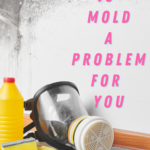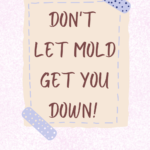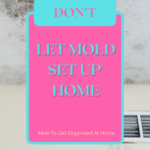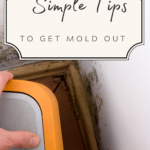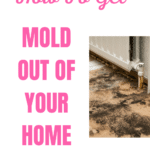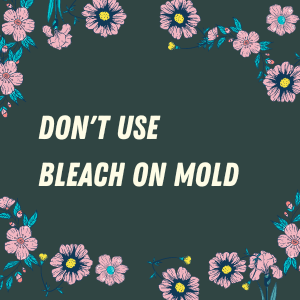How To Get Rid Of Mold Simply And Easily From Your Home
Do you have mold in your home and you want it gone but you don’t know how you are even going to start? Follow these simple tips and advice on how to get rid of mold in your home simply without feeling like you have let yourself down.
Mold spores are in the air, you can’t see them and that means they can float by you and find the perfect breeding ground for a new mold colony. You have to be on the lookout for areas in your home that could potentially be the ideal home as well as staying on top of the mold problem that you might already have in your home.
Let’s look at the different areas you might get mold in your home and the ways in which you can tackle it safely and reduce the likelihood of it returning.
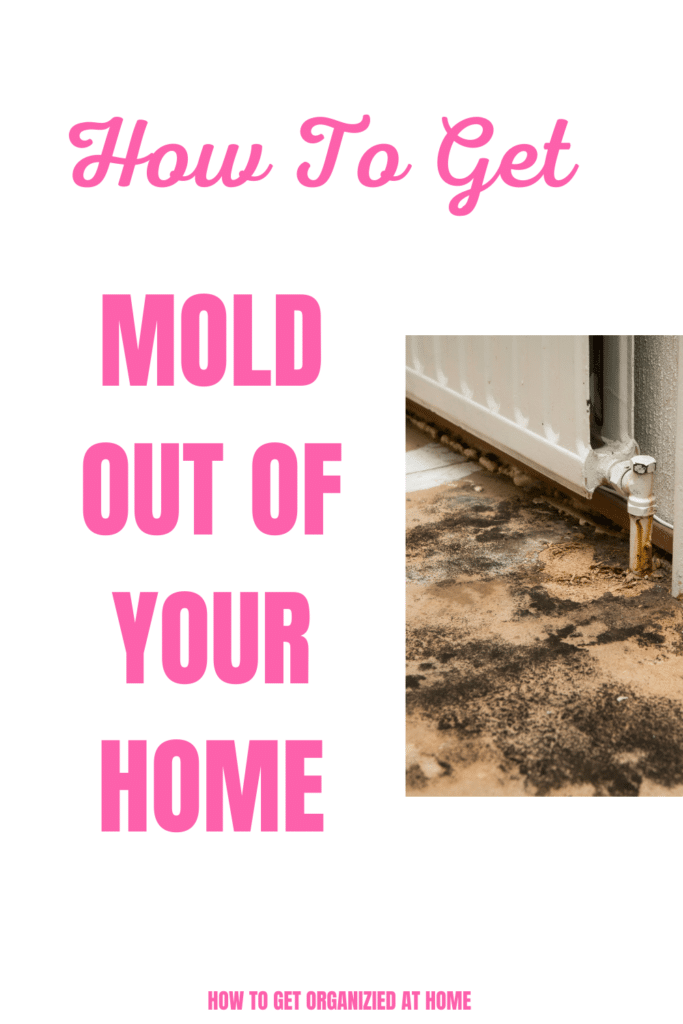
What Is Mold?
I think this is an easy question to answer, it’s a living organism that loves to live in warm and damp areas of our homes.
They have found that our homes make really good places to live and grow and set up their own homes.
They are spread by the mold creating spores which can float off in the air and find new places to set up home.
Killing Mold In Your Home
The good news is that often most mold is easy to treat and to kill off, however, it is possible for it to come back. Even though mold is tiny it’s not good for our health or the health of our families to live in homes that have bad mold outbreaks which is why it’s so important that you don’t let mold fester in your home and grow out of control.
There are some molds which are not easy to treat and can make your home not habitable because they are really bad for your health.
There are some types of mold that you have to get experts to get rid off, some black mold removal is done by specialists who will remove the toxic residue from your home and make it safe for you to live there.
Where Do Molds Live?
Affiliate links are included for your convenience. (Which means if you make a purchase after clicking a link I will earn a small commission which won’t cost you a penny more!) Click here to read my full disclosure and privacy policy.
Mold likes to live in wet and warm places so this often means bathrooms and windows. The more we seal up our homes the more mold is going to take over different areas and this isn’t good practice for anyone.
We are told to block drafts in our homes, have triple glazed windows because this will prevent drafts and heat loss will become a minimum.
What they are forgetting about is how much mold loves this type of environment and often this will mean an outbreak of mold.
But how do you prevent mold from taking up home in your home in the first place ? You have to have
Open windows and letting in fresh air can have an impact on reducing the amount of spores that can and will take hold of the different areas in your home.
Property Damage
If you have damage to the property you are living in and there is a high amount of water that is running down the wall this can and will lead to potential problems on the inside.
The wall will become damp and that means that mold is going to set up home, you will not only need to sort out the problem with what is causing the water damage but you will also need to tackle the mold that takes up residence too.
It’s important to keep on top of any repairs you need to make to ensure that you reduce the potential for damp to penetrate and cause cases of mold to appear.
Related Article: How To Get Rid Of Mold And Damp
How Do You Get Rid Of Mold On Walls
The first thing you need to do is to check as to why you are getting any mold in the first place? Is there a
You need to get this repaired first, it will keep coming back unless the damage is fixed first.
I always mark any dampness and mold areas with a pencil to make sure that I’m checking if anything is spreading and becoming worse or if things are improving.
You don’t need harsh chemicals to get rid of mold, what you do need is a
Make sure that you wear
How Do You Get Rid Of Mold In A Bathroom
This will depend if the
It’s not killing the mold, the mold is still alive and all that happens is that it will reappear.
There are different types of mold and different colours too, sometimes mold can look pinky, but you still need to get rid of this mold and the best option is
Often what you find in the bathroom is surface mold and it’s easy to wipe away unless it’s some sort of porous materials, like
Related article: How To Remove Mold From A Bathroom Ceiling Without Bleach
Mold In Grout
There is nothing that will spoil the perfect presentation of a bathroom quicker than seeing mold in the grout. Getting mold out of grout isn’t easy because it dips and so it’s more difficult to get out which is why I use a grout brush and this makes the cleaning process so much easier.
A
Sometimes, I just use a
Pin this:
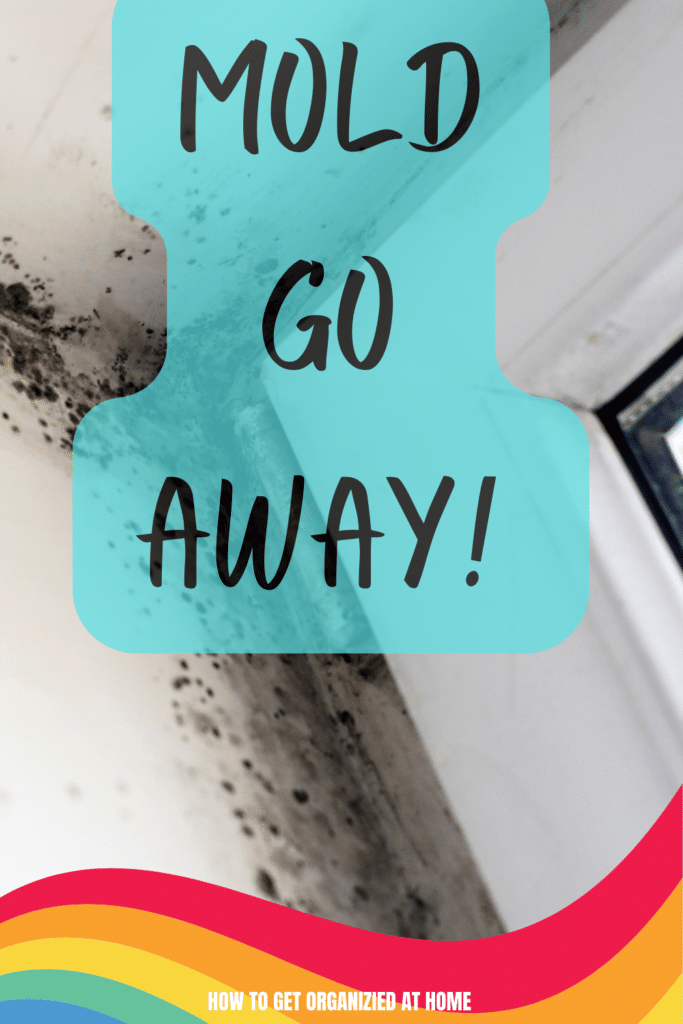
How Do You Get Rid Of Mold In The Kitchen
There are lots of places that mold will take hold in the kitchen if you let it. You really do need to keep an eye on the different areas of your kitchen and make sure that mold isn’t making a home for itself.
Common places include:
- The seal around the fridge, this does gather dirt quickly and becomes a perfect home for mold
Sealant joining countertop and wall. This is often a common place as it’s often damp and mold exposure won’t take long to take hold- Behind the taps
- Around the edge of the sink
- Joins that you might have on the counter top
- Around the windows and on the window sills
- Kitchen appliances that haven’t been cleaned properly
When you attempt to clean any of these areas make sure you are wearing rubber gloves to protect your hands and protective clothing so you don’t splash cleaning solution onto your clothing.
Related article: The Best Way For Tackling Mold On Window Sils
Mold In The Laundry
Clothes can go moldy quickly if they are left wet or damp and sit there for a while before washing, this is due to the damp cloth that is perfect for the mold to set up home. If your clothes have mold on them I don’t wash them or see if I can rescue them because of the fact that you don’t want any mold spores near your skin or in your washing machine.
It happened to me and the clothes went into the bin. I don’t want to risk my health or my family’s health by potentially exposing them to mold spores in their clothing. Mold can and will result in respiratory problems and you really don’t want that for your family.
If you keep your washing machine dry when not in use it will reduce the likelyhood of mold devloping in their, if mold does take up residence then you must prevent future mold growth.
As I’ve said before, a
How To Find Signs Of Mold
The best way to find mold is to keep a lookout for signs including the musty smell that’s associated with mold. If you are vacuuming make sure your
You will often see the visible mold appearing and this means that it’s already started to colonize this area in your home.
If you see mold, you want to attack it so it doesn’t become a problem in your home. Using
What To Do If You Have Mold
You need to look at the source of the problem and work out why the mold is taking up home in your home. Is there adequate air movement? Do you have an
There is a possibility that you have a moisture problem in your home and you need to address this in the first place. It can be as simple as
Damp towels and other
Related article: How To Get Rid Of Mold In A House
What To Do If You Have Mold Stains
If you have mold on your walls or ceiling you are going to need to paint them with an
Sometimes this doesn’t work because you haven’t gotten rid of the problem and there is still a mold and damp issue that is causing the mold to continue to grow and spread.
Let’s Recap…
You don’t want mold in your home, you want to get rid of it as soon as you possibly can. It’s not good for your health or that of your family.
If you have mold in sealant then you are going to need to replace the sealant to completely get rid of the mold.

